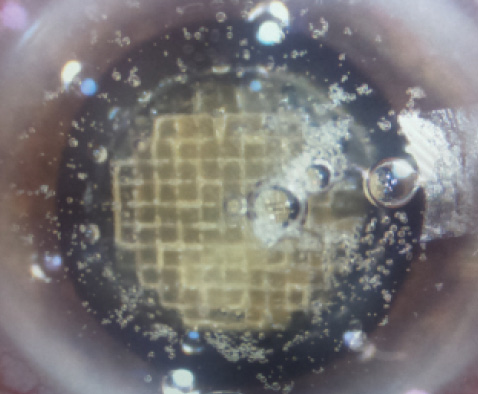Laser cataract surgery is relatively new but has advanced significantly during the past 3½ years. Improvements in incisional architecture,1 the precision and strength of the capsulotomy,2 and software have led to quicker laser treatments and better outcomes.3 Perhaps the most noteworthy step forward is in lens fragmentation. More sophisticated pattern development and utilization, specifically grid pattern applications, have reduced or eliminated ultrasound energy.1,4,5 Consequently, slight adjustments in surgical technique during the phacoemulsification are sometimes necessary. Phaco platforms' synergistic tool systems augment safety, efficacy, recovery, and patients' satisfaction, an outcome with which every surgeon can be pleased.3
FEMTOSECOND LASER SURGERY SYSTEMS
When it comes to cataract removal, laser technology allows surgeons to perform the capsulotomy, phacofragmentation, and corneal arc incisions with predictable, precise results. With the Catalys Precision Laser System (Abbott Medical Optics), the LenSx Laser (Alcon), the Lensar Laser System (Lensar), and the Victus Femtosecond Laser (Bausch + Lomb), surgeons select a desired “softening” or grid pattern and fragment the cataract (Figure). Ultimately, this step reduces the amount of ultrasound energy required to remove the nuclear material and condenses the technique into a noninvasive, predictable step of the procedure. The risk of collateral damage to the anterior segment, endothelial cell loss, and trauma to the eye decreases with the laser, which hastens recovery.1
FLUIDICS
Cataract surgeons have long favored peristaltic over Venturi systems for their safety and control, but advanced phaco technology is shifting that paradigm. With the ability to fragment the nucleus into smaller pieces, efficiency in fluidics during the vacuum portion becomes more essential. After a cataract has been prechopped, the peristaltic mode is probably not necessary. The efficiency of the Venturi pump enables surgeons to easily and quickly remove prechopped fragments in a controlled manner. Unlike with a peristaltic pump, there is no need with a Venturi-based pump to alternate between occlusive and nonocclusive periods when repositioning the phaco tip, because nuclear material flows to the tip on a continuous basis. In my personal experience, this advance has facilitated laser cataract surgery and improved results, especially in eyes treated with a grid pattern.

Figure. Grid pattern performed by the author with the LenSx Laser.
The Whitestar Signature System (Abbott Medical Optics) can switch between a true peristaltic pump and a true Venturi pump on the fly. The unit automatically accounts for changes in IOP and responds to maintain chamber stability, preventing surge by anticipating occlusions and adjusting vacuum power before occlusion breaks. In Venturi mode, the surgeon can control vacuum and holding power with the foot pedal, which increases predictability, but easily revert to peristaltic mode for the removal of large nuclear fragments. Each surgeon can customize his or her technique and approach based on personal preference and patients' needs.
The Centurion Vision System (Alcon) relies on an active fluidics system with balanced energy to enhance the surgeon's experience and improve patients' outcomes. The machine is thus a dynamically responsive platform. Active irrigation allows the surgeon to select a target IOP, and the technology responds to changes in the anterior chamber to maintain a constant system. The Fluidics Management System consists of a cassette, which approaches Venturi settings. Balanced energy in combination with handpieces further improves the Centurion's thermal profile over traditional systems'.
The Stellaris Vision Enhancement System (Bausch + Lomb) is a true Venturi system with a peristaltic option. The dual-linear foot pedal enables excellent vacuum control, which is advantageous for soft nuclei prechopped with the laser. Bausch + Lomb has also launched a “zero phaco handpiece” to couple with these laser procedures and enable safer, more effective lens dissolution and removal with no ultrasound power.
CONCLUSION
Modern cataract surgeons must adapt to new and improved technologies. With the advent of laser grid pattern dissections, surgeons can remove cataracts with less intervention, more precision, and significantly reduced phaco time. The ultimate goal is simply to aspirate a lens without additional ultrasound energy, and that technology to achieve this is currently available. Phaco platforms have evolved to help surgeons deliver the best possible outcomes to their patients. n
1. Mastropasqua L, Toto L, Mastropasqua A, et al. Femtosecond laser versus manual clear corneal incision in cataracts surgery. J Refract Surg. 2014;(1):27-33.
2. Friedman NJ, Palanker DV, Schuele G, et al. Femtosecond laser capsulotomy. J Cataract Refract Surg. 2011;37:1189-1198.
3. Roberts TV, Lawless M, Ball SJ, et al. Surgical outcomes and safety of femtosecond laser cataract surgery: a prospective study of 1500 consecutive cases. Ophthalmlogy. 2013;120:227-233.
4. Conrad-Hengerer I, Al Juburi M, Schultz T, et al, Corneal endothelial cell loss and corneal thickness in conventional compared with femtosecond laser-assisted cataract surgery: three-month follow-up. J Cataract Refract Surg. 2013;39:1307-1313.
5. Reddy KP, Kandulla J, Auffarth GU. Effectiveness and safety of femtosecond laser-assisted lens fragmentation and anterior capsulotomy versus the manual technique in cataract surgery. J Cataract Refract Surg. 2013;39:1297-1306.
Jonathan Stein, MD
• practices at Ophthalmic Consultants of Connecticut in Fairfield, Connecticut
• clinical assistant professor at the NYU School of Medicine, New York City
• steinjonathan@hotmail.com
• acknowledged no relevant financial interest


